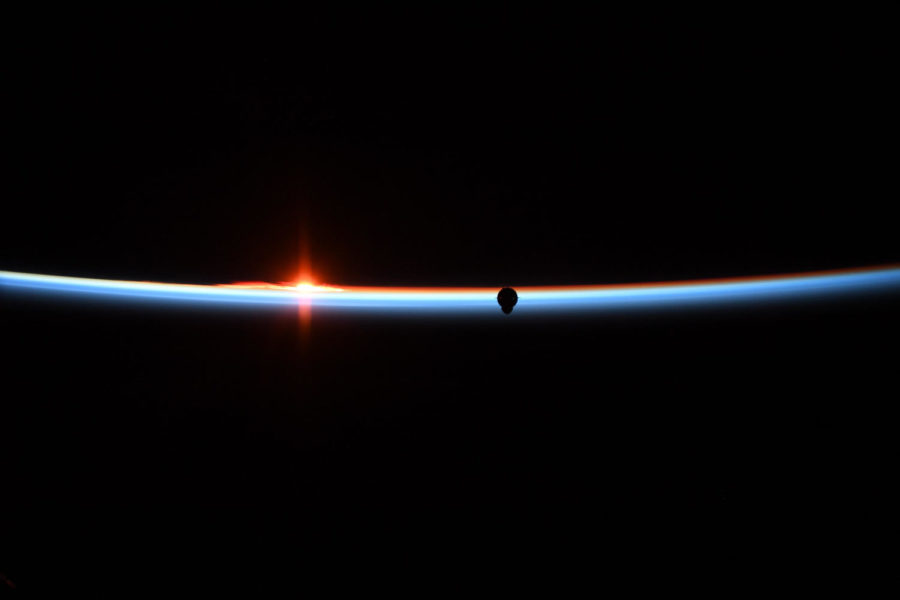‘The Dawn of a New Era in Human Spaceflight’
Photo by: Photo courtesy of NASA
On March 8, the SpaceX Demo-1 mission concluded after a successful splashdown in the Atlantic Ocean. The mission was an unmanned shakedown flight to the International Space Station and back for SpaceX’s new Crew Dragon spacecraft
The static fire occurred on Jan 24 to test the systems on the Falcon 9 booster: B1051. This was the first launch for booster B1051. A static fire is when the rocket basically goes through a launch rehearsal, lighting the engines for a few seconds without liftoff. The droneship, named “Of Course I Still Love You” left port on Feb 26 after a record turnaround from arriving to port on Feb 24 after the Nusantara Satu mission. “Of Course I Still Love You” was towed out to the open Atlantic Ocean approximately 492 km downrange of the launch site.
On Feb 28, the Falcon 9 was rolled out from the Horizontal Integration Facility (HIF) to Launch Complex-39A (LC-39A) using the Transporter Erector (TE). The TE then raised the spacecraft to the upright position on the pad.
LC-39A was originally built for the Apollo program in the 1960s, and it was there that 12 Saturn V launches occurred, including Apollo 8, 11, 13, and Skylab. After the Apollo program, the pad was modified for the Space Shuttle Program. For the Shuttle, a 105.7 meter/347-foot tower was built called the Fixed Service Structure (FSS) to provide access to the shuttle. The Rotating Service Structure (RSS) was also built to provide access to the Space Shuttle’s payload bay. In total, 82 Space Shuttle missions launched from LC-39A, including STS-1 and STS-135.
SpaceX signed a property agreement with NASA in 2014 which basically was a 20-year lease on the pad. To modify the pad for Falcon 9 and Falcon Heavy launches, the RSS was torn down and the FSS was modified for the Crew Dragon. The crew access arm was installed to the FSS in 2018.
SpaceX’s Crew Dragon is derived from their Dragon spacecraft which currently delivers cargo to the International Space Station (ISS) under the Commercial Resupply Services (CRS) contract awarded to SpaceX along with Orbital ATK (which is now part of Northrop Grumman) by NASA. The first CRS mission (CRS-1) launched to the ISS in 2012. Crew Dragon was developed as a result of SpaceX along with Boeing being awarded with the Commercial Crew Transportation Capability (CCtCap) contracts in 2014. The CCtCap contracts were given to the companies to build safe spacecraft which could transport NASA astronauts from American soil to the ISS.
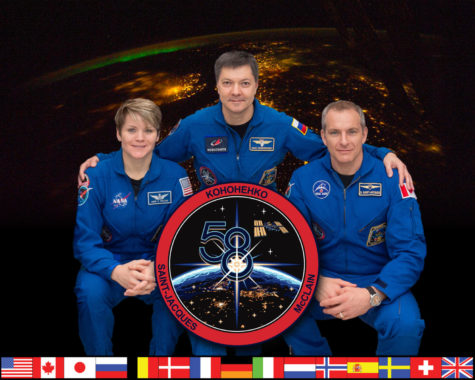
Currently, NASA pays for seats aboard the Soyuz spacecraft, which is flown by the Russian Space agency, Roscosmos. The Soyuz spacecraft was designed in the 1960s by the Soviet space agency. Currently, the Soyuz is the only way to fly astronauts and cosmonauts to the ISS.
The Crew Dragon is made up of two segments, the pressurized capsule which will carry four astronauts (it can carry seven at the maximum), and the service module which is unpressurized. The capsule also has a nose cone on the top which opens to reveal the docking adaptor. Crew Dragon also has Draco Thrusters which help the spacecraft maneuver in space. In the case of an anomaly, the spacecraft’s eight SuperDraco engines would push the spacecraft away from the rocket. The Crew Dragon is an entirely autonomous spacecraft, but it can be manually controlled in the case of an emergency. Below the spacecraft is the trunk, which contains the solar array for power and the radiator, the trunk is jettisoned before reentry.
A Falcon 9 rocket consists of a first stage with nine Merlin engines, landing legs, and hypersonic grid fins. The nine Merlin engines are powered by liquid oxygen (LOX) and kerosene (RP-1). The second stage consists of one vacuum optimized merlin engine called a M1D. On top of the second stage is the payload, which in this case is the Crew Dragon.
The countdown for the early Saturday morning launch was monitored by the SpaceX and NASA teams in Firing Room 4, nearby the famous Vehicle Assembly Building (VAB). Among the teams in Firing Room 4 were NASA Astronauts Douglas G. Hurley and Robert L. Behnken who are assigned to the SpaceX Demo-2 mission (scheduled for July of 2019). At T-minus 45 minutes, the SpaceX launch director gave the go ahead to arm the Crew Dragon’s eight SuperDraco engines in case of a further emergency. Then, the rocket was filled with propellent including RP-1 and LOX. At T-minus 45 seconds, the launch director gave the final go for launch. Then, at exactly 2:49 a.m. EST, the Falcon 9 roared to life and lifted off from LC-39A.
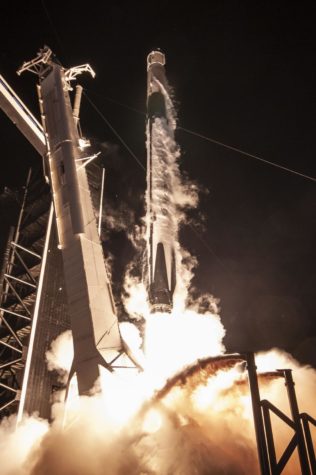
After the first stage separated, the first stage performed its flip maneuver which flips the booster the opposite direction so that the boostback burn can occur. The boostback burn allowed the first stage to correct its trajectory for landing. After its entry burn, the grid fins helped the booster guide itself toward the autonomous drone ship in the Atlantic Ocean. Finally, the first stage booster made a vertical landing burn which allowed it to make a successful landing on the drone ship named, “Of Course I Still Love You.”
Even though Demo-1 was unmanned, the Crew Dragon was filled with around 400 pounds of cargo and supplies for the Expedition 58 crew on board the ISS. Instead of a crew, a dummy was seated in one of the crew seats. The dummy was named Ripley and was lined with sensors to detect things like forces which a future crew member might feel. In addition to Ripley, there was a plush earth toy placed in the spacecraft which Elon Musk called a “super high tech zero-g indicator.”
After launch, the spacecraft maneuvered closer to the ISS. At 5:51 a.m. EST on Sunday, March 3, the Crew Dragon docked via a “soft-capture” to the International Docking Adaptor (IDA) on the forward end of the Harmony module, also called Node 2 of the ISS. A few hours later, Canadian Astronaut David Saint-Jacques and three-time veteran Cosmonaut Oleg Kononenko of Russia opened the hatch of Crew Dragon while wearing oxygen masks to make sure the environment inside of the spacecraft was safe. After determining the spacecraft was safe, the Expedition 58 crew held a ceremony in Node 2 to welcome the new spacecraft. On camera, NASA astronaut Anne McClain delivered a speech and gave a brief tour of the Crew Dragon.
“Today, human advancement of exploration continues, as the first new space vehicle designed for humans in over 40 years arrived at our front door, welcomed by our crew of one Russian, one Canadian and one American, who have been living together as family for three months onboard the International Space Station. These events remind us that we are more alike than different; that we can be united by a cause that is not based on fear, threat or common enemy, but rather on a bold endeavor, an insatiable curiosity to go beyond what is known, and to do what has never been done. We humans were built for exploration, and we are built to do it together,” said McClain.
On Thursday, March 7, the hatch of Crew Dragon was closed in preparation for undocking the next day. On Friday, March 8, Crew Dragon undocked from the ISS at 2:32 a.m. EST. After the Spacecraft undocked, Dragon proceeded to jettison the trunk and then performed the deorbit burn at 7:53 a.m. EST. Then, Crew Dragon reentered the Earth’s atmosphere at an altitude of 400,000 feet. The spacecraft streaked across the morning sky from British Columbia to South Carolina.
After reentry, the spacecraft successfully splashed down in the Atlantic Ocean via four parachutes at 8:45 a.m. EST. The SpaceX recovery ship, “Go Searcher” was there to recover the Demo-1 Crew Dragon capsule. The splashdown comes almost exactly 50 years to the day from the splashdown of Apollo 9 on March 13, 1969, which was the last American manned spacecraft to splashdown in the Atlantic Ocean.
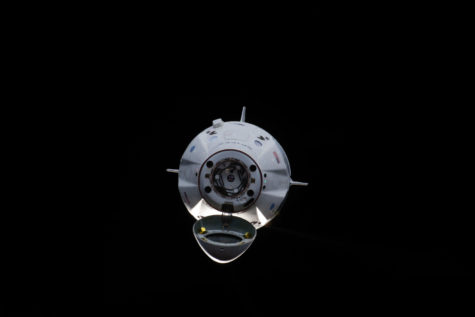
“I want to congratulate the NASA Commercial Crew Program and all of the engineers who have been a part of this effort from the very beginning. This is an amazing feat for America,” said NASA Administrator Jim Bridenstine.
“If you just think about the enormity of this flight and all of the prep that went into it – getting the pad refurbished, getting the flight control room set up, getting the vehicle built, getting the Falcon 9 ready, all of the analysis and mission support that went into it – it’s just been a tremendous job. Our NASA and SpaceX teams worked seamlessly not only in the lead-up to the flight but in how we managed the flight,” said Steve Stich, deputy manager of the Commercial Crew Program in a press statement.
After a busy week for the Expedition 58 crew regarding the Demo-1 stay on board the ISS, next week will also be busy with the launch and docking of the Expedition 59/60 crew on board Soyuz MS-12. On March 14, the Soyuz MS-12 Crew is scheduled to launch aboard a Soyuz-FG rocket from the Baikonur Cosmodrome in Kazakhstan. The MS-12 crew consists of commander Alexey Ovchinin (Roscosmos), flight engineer number one Nick Hague (NASA), and flight engineer number two Christina Koch (NASA). This will be Ovchinin and Hague’s second attempt to space after their inflight abort on board Soyuz MS-10 in October of 2018. During Expedition 59, NASA astronauts Anne McClain and Christina Koch will conduct the first all-female spacewalk on March 28.
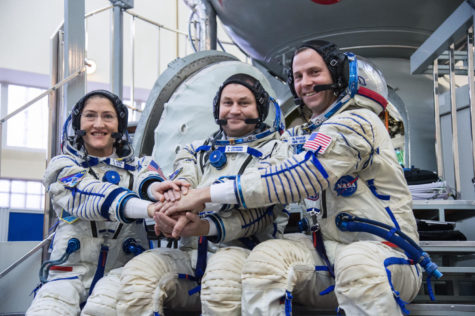
Next for Crew Dragon will be the Crew Dragon In-Flight Abort Test which is scheduled for the second quarter of 2019. During the Abort Test, the SuperDraco abort motors will fire to eject the capsule from the Falcon 9 booster number B1048.3 at a point in flight called maximum aerodynamic pressure or Max-Q. After the test, the capsule (the same capsule used in the Demo-1 spaceflight, just refurbished) will splashdown in the Atlantic Ocean. After the test, Demo-2, is scheduled to launch to the ISS in the summer, this time with NASA Astronauts Hurley and Behnken on board.


